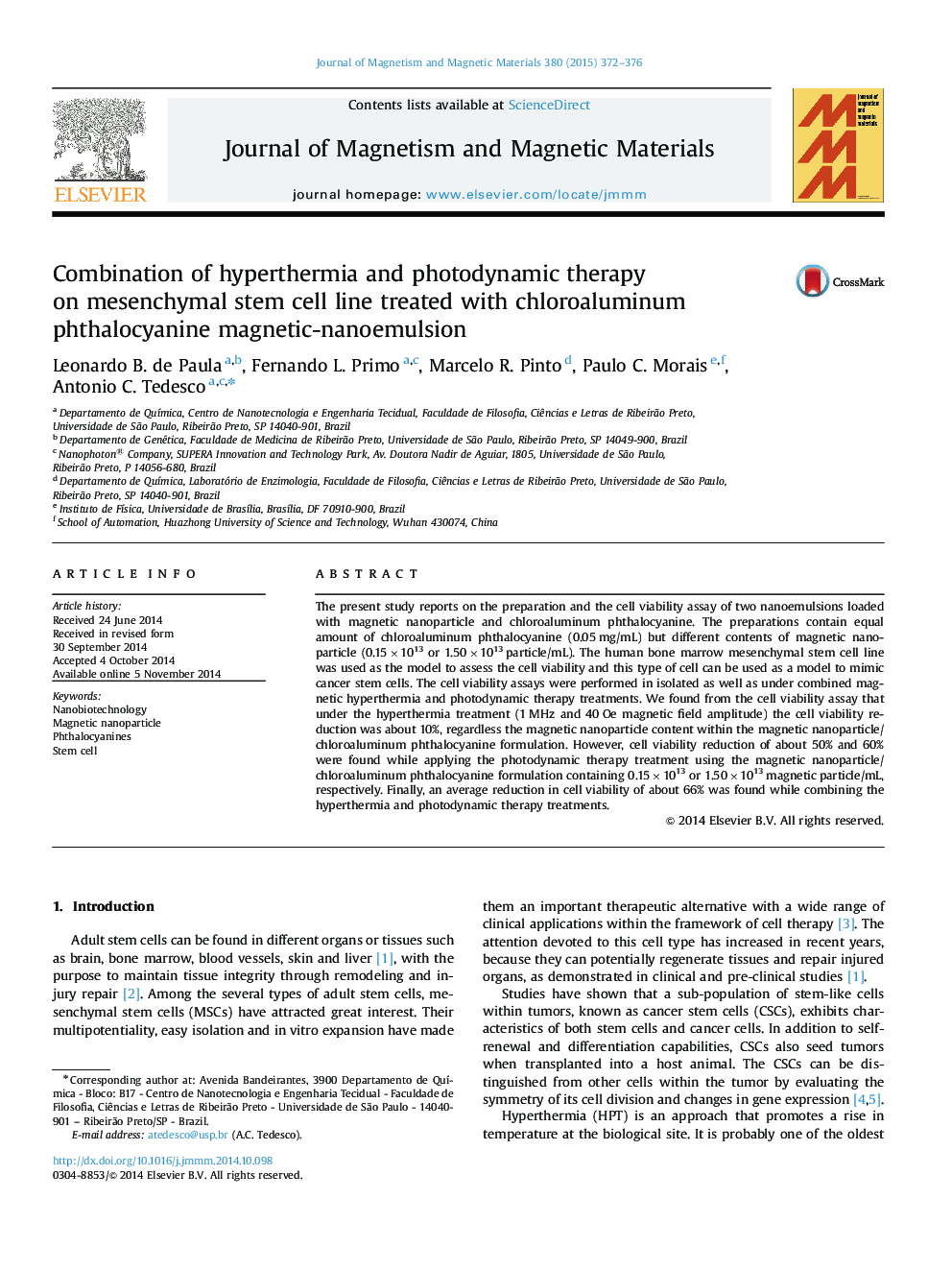| Article ID | Journal | Published Year | Pages | File Type |
|---|---|---|---|---|
| 1798911 | Journal of Magnetism and Magnetic Materials | 2015 | 5 Pages |
•Current protocols in nanotechnology allow for biocompatible magnetic nanoparticles being associated with photosensitizer photoactive drugs, which could lead to perfectly controlled drug release.•The combination of the HPT and PDT therapies can be useful to develop further protocols for both advanced in vitro and in vivo assays.•Magnetic nanodevices associated with therapies have led to the decreased of proliferation of cell population that provides a favorable environment for tumor progression.
The present study reports on the preparation and the cell viability assay of two nanoemulsions loaded with magnetic nanoparticle and chloroaluminum phthalocyanine. The preparations contain equal amount of chloroaluminum phthalocyanine (0.05 mg/mL) but different contents of magnetic nanoparticle (0.15×1013 or 1.50×1013 particle/mL). The human bone marrow mesenchymal stem cell line was used as the model to assess the cell viability and this type of cell can be used as a model to mimic cancer stem cells. The cell viability assays were performed in isolated as well as under combined magnetic hyperthermia and photodynamic therapy treatments. We found from the cell viability assay that under the hyperthermia treatment (1 MHz and 40 Oe magnetic field amplitude) the cell viability reduction was about 10%, regardless the magnetic nanoparticle content within the magnetic nanoparticle/chloroaluminum phthalocyanine formulation. However, cell viability reduction of about 50% and 60% were found while applying the photodynamic therapy treatment using the magnetic nanoparticle/chloroaluminum phthalocyanine formulation containing 0.15×1013 or 1.50×1013 magnetic particle/mL, respectively. Finally, an average reduction in cell viability of about 66% was found while combining the hyperthermia and photodynamic therapy treatments.
